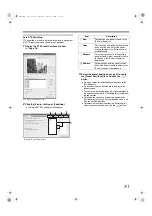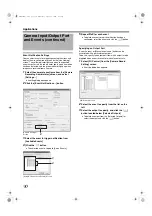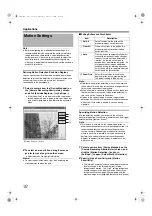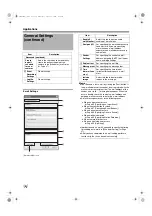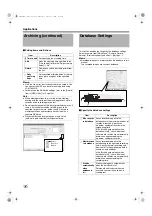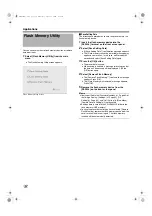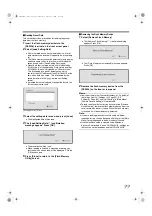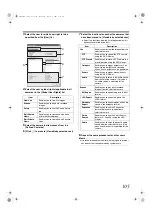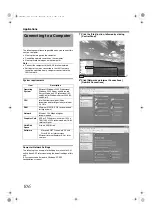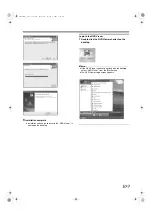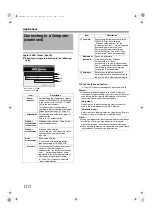
95
With the archiving feature, you can store recorded images up
to the maximum available capacity of the hard disk.
By default, recorded images received from cameras are
stored in the database for each camera, and data is archived
automatically once the database is full.
Memo :
●
To adjust the database settings for each camera, click
[Camera Record Setting]
-
and select [Datebase Settings]. You can store up
to 600,000 frames or 40 GB of data. If the maximum
capacity is exceeded, data is deleted starting from the
oldest information. By archiving on a daily basis, you can
store image data up to the maximum available capacity of
the hard disk.
●
You can specify the number of times to create archives in
a day.
●
The archiving location for each camera is automatically
selected. The drive with a large amount of free space is
selected.
●
You can use the playback features for archived images in
the same way as normal recorded images.
1
Click [Camera Recording Administator]
2
Specify the number of days for storing the
archived data in [Delet databases in the backup
directory older then[
3
Use the [Add] and [Delete] buttons to specify the
time to create archives everyday.
4
Select the camera for which archive is to be
created
Note :
●
The recorded images may be interrupted for several
seconds when archiving starts.
Memo :
●
If audio is enabled during recording, audio data from the
device will also be archived.
䡵
Setting Items and Buttons
Archiving
A
C
B
D
E
F
G
H
I
J
K
Item
Description
A
This function is not available.
Check box is selected at all times.
B
Delet databases
in the backup
directory older
then[
For specifying the number of days
you want to store archived images.
C
Automatic
delete old
archives if
space is needed
This function is not available. Check
box is selected at all times.
D
Sends out an e-mail alert when
archiving fails.
E
The archiving location is
automatically selected. The drive
with a large amount of free space is
selected.
Select this check box.
If the check box is deselected, the
[Save to] button appears.
Deselect this check box if you are
specifying a drive to save the
archive data to, such as NAS.
Select Directory
Appears when the [Automatic path
selection] check box is not selected.
Specify the archive location for
each camera. Enter the archive
location if you are specifying a drive
to save the archive data to, such as
NAS.
Note :
●
Playback of the old archive data
will fail if the archive destination
is changed after saving.
F
Select cameras
for which the
archiving
function should
apply
If you have selected the [Enable
Archiving] check box, a list of
cameras that enable archiving
appears.
To specify the archiving settings for
a specific camera, select the check
box next to the name of the camera.
G
Selects the check box for all
cameras.
H
Clears the check box for all
cameras.
I
Not used.
VR-N1600_J.book Page 95 Wednesday, August 8, 2007 3:32 PM
Summary of Contents for VR-N1600E
Page 2: ...IMPORTANT SAFEGUARDS I VR N1600_J book Page I Wednesday August 8 2007 3 32 PM ...
Page 3: ...SAFETY PRECAUTIONS for USA II VR N1600_J book Page II Wednesday August 8 2007 3 32 PM ...
Page 4: ...SAFETY PRECAUTIONS for Europe III VR N1600_J book Page III Wednesday August 8 2007 3 32 PM ...
Page 5: ...IV VR N1600_J book Page IV Wednesday August 8 2007 3 32 PM ...
Page 6: ...SICHERHEITSVORKEHRUNGEN for Germany V VR N1600_J book Page V Wednesday August 8 2007 3 32 PM ...
Page 7: ...VI VR N1600_J book Page VI Wednesday August 8 2007 3 32 PM ...
Page 9: ...VIII E 1600E E 1600E E E VR N1600_J book Page VIII Wednesday August 8 2007 3 32 PM ...

